Best Swift Programming Resources to Buy in December 2025
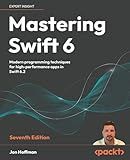
Mastering Swift 6: Modern programming techniques for high-performance apps in Swift 6.2


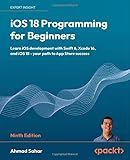
iOS 18 Programming for Beginners: Learn iOS development with Swift 6, Xcode 16, and iOS 18 - your path to App Store success


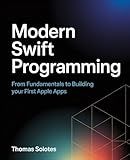
Modern Swift Programming: From Fundamentals to Building Your First Apple Apps


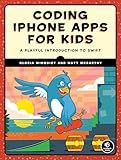
Coding iPhone Apps for Kids: A Playful Introduction to Swift


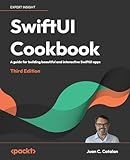
SwiftUI Cookbook: A guide for building beautiful and interactive SwiftUI apps


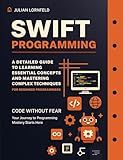
Swift Programming: A Detailed Guide to Learning Essential Concepts and Mastering Advanced Techniques


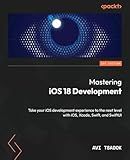
Mastering iOS 18 Development: Take your iOS development experience to the next level with iOS, Xcode, Swift, and SwiftUI


To replace a variable name with its value in Swift, you can use string interpolation. By placing a backslash followed by parentheses and the variable name inside a string, you can replace the variable name with its actual value. For example:
let name = "John" let message = "Hello, \(name)!" print(message) // Output: Hello, John!
In this example, the variable name "name" is replaced with its value "John" using string interpolation. This allows you to create dynamic strings that include variable values in Swift.
How to test the functionality of variable name replacement with their values in Swift?
To test the functionality of variable name replacement with their values in Swift, you can write a simple test case using XCTAssertEqual function in XCTest framework. Here's an example:
// Your function that replaces variable names with their values func replaceVariableNames(_ variables: [String: Int], _ expression: String) -> String { var replacedExpression = expression
for (name, value) in variables {
replacedExpression = replacedExpression.replacingOccurrences(of: "{\\(name)}", with: "\\(value)")
}
return replacedExpression
}
import XCTest
class VariableReplacementTests: XCTestCase {
func testVariableReplacement() {
let variables = \["x": 3, "y": 5\]
let expression = "The value of x is {x} and the value of y is {y}"
let result = replaceVariableNames(variables, expression)
XCTAssertEqual(result, "The value of x is 3 and the value of y is 5")
}
}
// Run the test VariableReplacementTests.defaultTestSuite.run()
In this test case, we define a function replaceVariableNames that takes a dictionary of variable names and their values, as well as an expression with placeholders for these variables. The function replaces the placeholders with their corresponding values and returns the modified expression.
We then create a test case testVariableReplacement where we define a dictionary of variables ["x": 3, "y": 5] and an expression "The value of x is {x} and the value of y is {y}". We call the replaceVariableNames function with these inputs and use XCTAssertEqual to check if the result matches the expected output "The value of x is 3 and the value of y is 5".
Finally, we run the test using VariableReplacementTests.defaultTestSuite.run() to check if the variable replacement functionality is working correctly.
How do I change a variable name to its value in Swift programming language?
To access the value of a variable in Swift, you simply need to refer to the variable by its name. For example, if you have declared a variable named myVariable and assigned it a value 20, you can access the value of myVariable by simply using its name myVariable in your code. Here's an example:
let myVariable = 20 print(myVariable) // This will print 20
If you want to assign the value of a variable to another variable, you can simply use the variable name without quotes. Here's an example:
let myVariable = 20 var anotherVariable = myVariable print(anotherVariable) // This will print 20
It's important to note that in Swift, variables are strongly typed, so the type of the variable needs to be known at compile time.
What are the advantages of using a library for replacing variable names with their values in Swift?
- Improved readability: By using a library for replacing variable names with their values, the code becomes more descriptive and easier to understand for other developers.
- DRY (Don't Repeat Yourself) principle: Using a library can help to eliminate duplicated code by centralizing the variable names and values in one place.
- Reduced errors: By abstracting the process of variable substitution, the likelihood of errors in the code is minimized.
- Flexibility: Libraries offer a variety of options for replacing variable names with their values, allowing developers to choose the most appropriate method for their specific needs.
- Time-saving: Using a library can save time and effort by providing a ready-made solution for variable substitution, rather than reinventing the wheel for each project.
How to document the process of replacing variable names with their values in Swift code?
To document the process of replacing variable names with their values in Swift code, you can follow these steps:
- Start by identifying the variables whose names need to be replaced with their values in the code. This can be done by reviewing the code and determining which variables are being used.
- Document the variable names that need to be replaced and the corresponding values that will be used in their place. This can be done by creating a table or list that pairs the variable names with their values.
- In the documentation, describe the process of replacing the variable names with their values. This may include instructions on how to locate and update the variable names in the code.
- Provide examples or code snippets to illustrate the process of replacing variable names with their values. This can help developers understand how the changes should be made in the code.
- Include any additional notes or considerations that may be relevant to the process of replacing variable names with their values. This may include information about potential pitfalls or best practices for making these types of changes.
Overall, documenting the process of replacing variable names with their values in Swift code can help ensure that changes are made accurately and efficiently. It can also serve as a helpful reference for developers working on similar tasks in the future.
What are the implications of replacing variable names with their values in Swift for code review processes?
Replacing variable names with their values in Swift code can make the code more difficult to understand and maintain, especially during code reviews. Here are some implications of this approach for code review processes:
- Decreased readability: When variable names are replaced with their values, it can make the code harder to read and understand for other developers who are reviewing the code. This can lead to confusion and make it more challenging to identify and fix any issues or bugs in the code.
- Increased likelihood of errors: Replacing variable names with their values can increase the likelihood of errors creeping into the code, as it can be harder to spot mistakes or inconsistencies in the logic.
- Difficult to maintain: If variable names are replaced with their values in the code, it can be challenging to make changes or updates to the code in the future. This can slow down the development process and make it harder to collaborate with other team members.
- Lack of context: Variable names provide important context and information about the purpose and intent of the code. By replacing variable names with their values, this context is lost, making it more difficult for reviewers to understand the code and provide valuable feedback.
Overall, replacing variable names with their values in Swift code can have negative implications for code review processes, as it can lead to decreased readability, increased likelihood of errors, difficulties in maintaining the code, and a lack of context. It is generally recommended to use meaningful and descriptive variable names in code to improve readability and maintainability.
